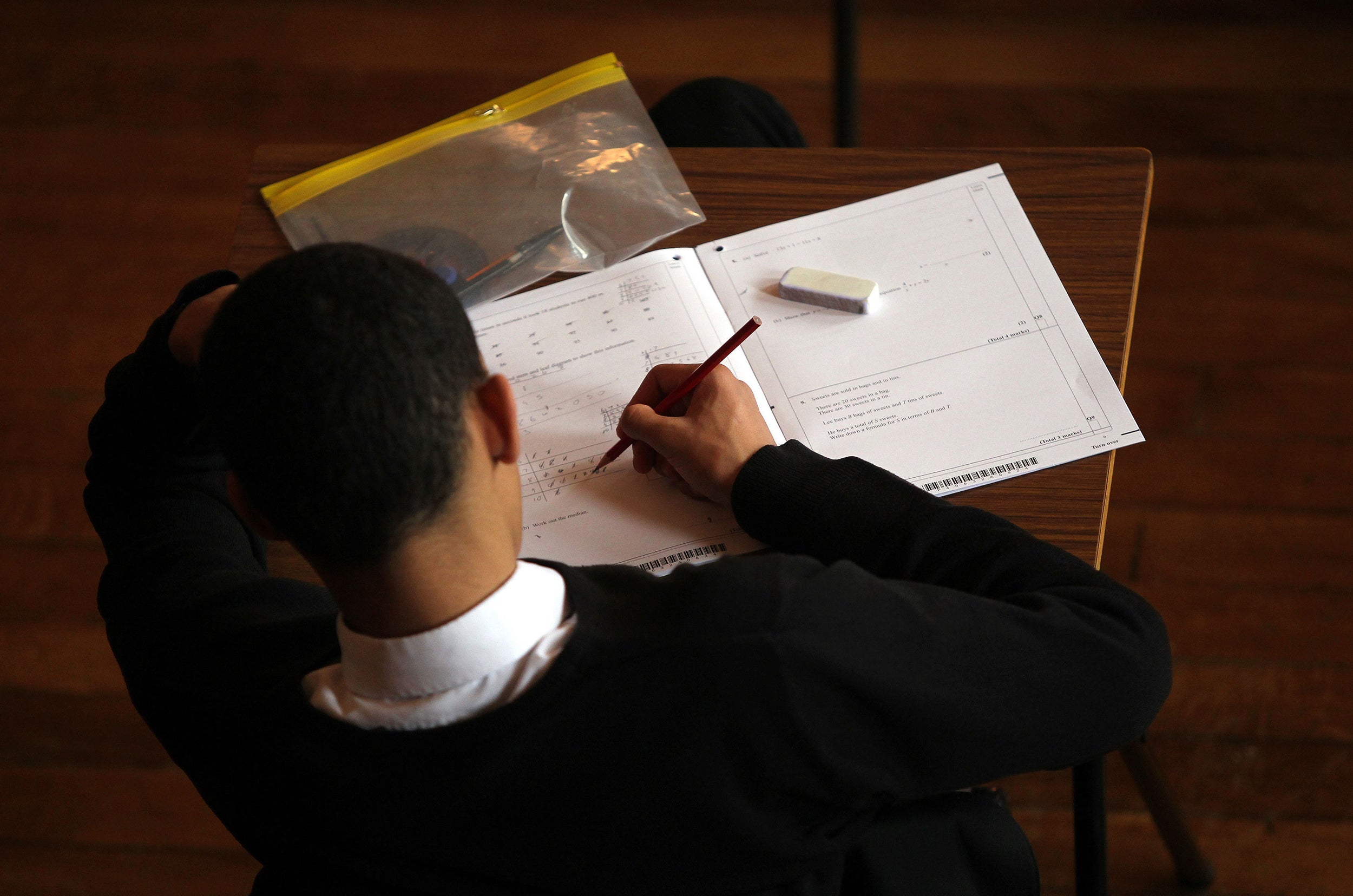Ten-year-olds denied SATs marks because of semi-colons that fail to meet official shape and size standards
Teachers call SATs marking scheme 'beyond parody' as primary school children are denied marks because of their right-leaning commas

Your support helps us to tell the story
From reproductive rights to climate change to Big Tech, The Independent is on the ground when the story is developing. Whether it's investigating the financials of Elon Musk's pro-Trump PAC or producing our latest documentary, 'The A Word', which shines a light on the American women fighting for reproductive rights, we know how important it is to parse out the facts from the messaging.
At such a critical moment in US history, we need reporters on the ground. Your donation allows us to keep sending journalists to speak to both sides of the story.
The Independent is trusted by Americans across the entire political spectrum. And unlike many other quality news outlets, we choose not to lock Americans out of our reporting and analysis with paywalls. We believe quality journalism should be available to everyone, paid for by those who can afford it.
Your support makes all the difference.In what teachers are calling a shambles beyond parody, primary schoolchildren are showing they know how to use punctuation in their SATs tests, but are being given no marks because their commas and semi-colons fail to meet strict official standards on shape and size.
In extraordinarily detailed advice signed off by the Government’s Standards and Testing Agency (STA), assessors were told to mark down semi-colons that fail to “adhere to the convention in relation to point of origin, height, depth and orientation”.
The advice, condemned as “draconian” by teachers who have shared it widely on social media, also stipulates for a semi-colon inserted between the words ‘tomorrow’ and ‘I’ on one question:
“Neither element of the semi-colon should start higher than the letter ‘I’.
“The dot of the semi-colon must not be lower than the bottom of the letter ‘w’ in the word ‘tomorrow’.
“The orientation of the comma element of the semi-colon must be inclined to the left or straight down.
"It cannot incline to the right.”
Teachers have also shared other examples that suggest the semi-colon and comma shape standards are being applied throughout the key stage 2 spelling, punctuation and grammar (spag) Sats tests for 10 and 11-year-olds.
In one, a pupil who correctly punctuated ‘Jenna, a very gifted singer, won the talent competition’, was given zero marks because of her right-leaning commas.
The criticisms come two months after a cross-party committee of MPs warned that the “high stakes” SATs tests were endangering children’s learning and wellbeing.
Teachers have shared examples of pupils putting a semi-colon in almost exactly the same position, only for some children to be marked correct and others incorrect.
They have also pointed out that because the question was testing whether children could insert a semi-colon in the right place in the sentence ‘Come and see me tomorrow; I will not have time to see you today’, no obvious gap was left between the words ‘tomorrow’ and ‘I’.
This, the teachers said, might have left some children with too little space to squeeze in their own handwritten punctuation mark, while others might have wanted to put their semi-colon in the most prominent position possible, so the examiner would be sure to see it.
Teachers said the question was also effectively calling on ten-year-olds not only to know about punctuation, but also to have the artistic ability to be able to “insert a correctly-scaled, pencilled semi-colon into font size 12”.
One head teacher described the marking scheme as “beyond parody”.
The comments form part of a litany of complaints, posted using the hashtage #SATsshambles, about needless pedantry and inconsistency in the marking of the tests.
Other examples included a paper where a pupil was seemingly marked correct for writing “The longest reigning Monique is Queen Elizabeth II”, but wrong for writing: “Angus was originally from Scotland”.
Russell Hobby, general secretary of school leaders’ union NAHT, who has previously warned about judging schools on their SATs data alone, told The Guardian: “We now operate within a testing culture which appears focused on catching young children out rather than recording their achievements.
“Such a culture will swiftly erode the confidence of parents and teachers that the system is operating in the best interests of pupils. The stakes are so high that we seem unable to apply reasonable common sense.”
The multinational publishing and educational company Pearson has the contract to manage the marking of the spag SATs tests for the Department for Education, and the guidance it produces is signed off by the Government’s Standards and Testing Agency.
A Department for Education spokeswoman said: "The key stage 2 tests assess the delivery of our new primary curriculum that ensures children are mastering the basics of literacy and numeracy. Markers are given additional guidance to ensure the published mark schemes are applied consistently and fairly, in this case to ensure children are using and forming punctuation correctly.
“Should any school feel mark schemes have been applied inconsistently or incorrectly they can submit pupils' scripts for review. Reviews are carried out by experienced supervisory markers who use their judgement to ensure no child is unfairly penalised.”
A spokeswoman for Pearson said: “Marking quality is extremely important and is something we monitor continuously.
“In the unusual circumstance that there is an error, there is a review process in place which ensures a fair and transparent system and enables Pearson to correct any discrepancies and ensure pupils receive a fair mark.”
Join our commenting forum
Join thought-provoking conversations, follow other Independent readers and see their replies
Comments